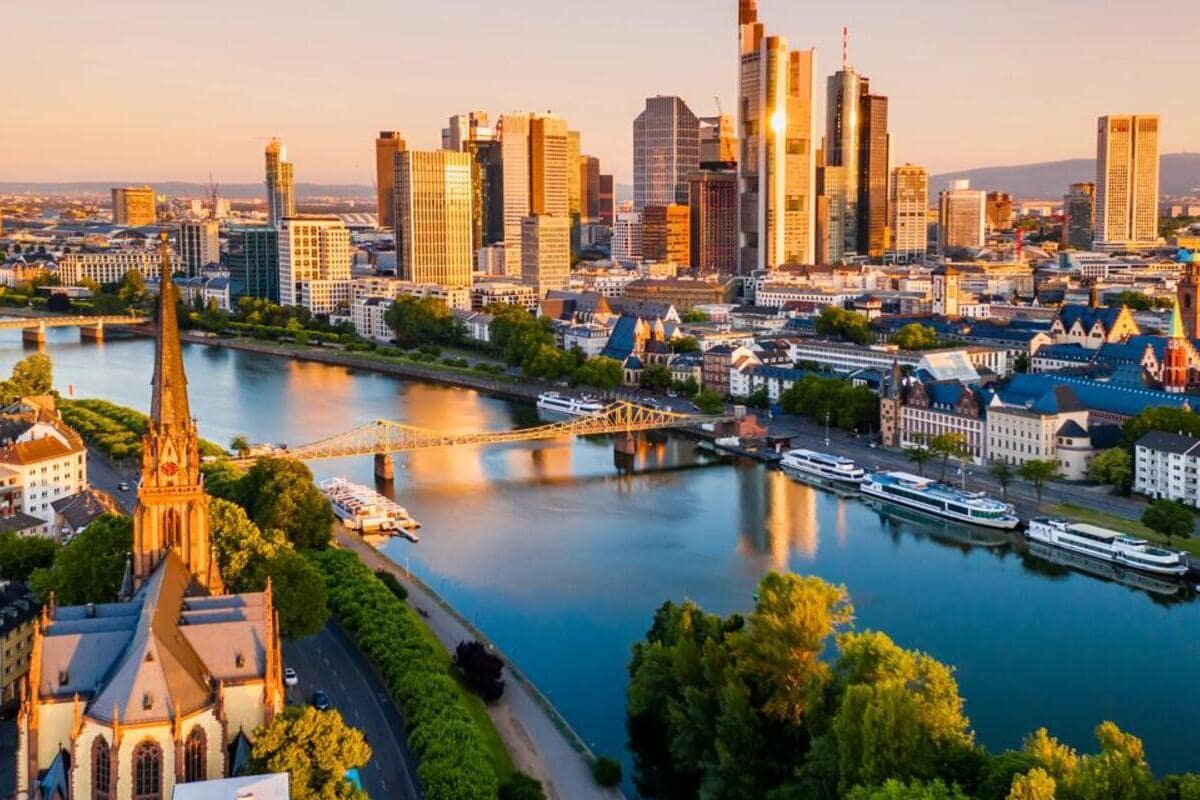Frankfurt is a city full of contrasts. Modern skyscrapers blend harmoniously with historical squares, while the rhythm of business life intertwines with the depth of culture and art. Often called the “little New York,” it boasts the tallest buildings in Germany and one of the most impressive skylines in Europe. Yet behind its image as Europe’s financial capital lies a fascinating world of stories and facts you may not know. These interesting insights will help you discover Frankfurt from an entirely new perspective.
- The city’s full name is Frankfurt am Main, as it lies on the Main River. Germany also has another city called Frankfurt — Frankfurt an der Oder — so this distinction is important. The name itself means “ford of the Franks,” referring to the crossing point used by ancient Frankish tribes.
- Frankfurt is one of the oldest cities in Germany, founded in the 9th century. During the Middle Ages, it hosted the elections and coronations of German emperors. Thanks to this, it became an important political center of the Holy Roman Empire.
- The city has the nickname “Mainhattan,” a blend of “Main” (the river) and “Manhattan.” This comes from its skyline filled with skyscrapers, creating one of the few true metropolitan silhouettes in Europe. The tallest building is the Commerzbank Tower, reaching 259 meters in height.
- Frankfurt is the financial heart of Europe. It is home to the European Central Bank, which oversees the euro — the common currency of the EU. The city also houses one of the largest stock exchanges in the world — the Frankfurt Stock Exchange (Frankfurter Wertpapierbörse).
- The famous writer Johann Wolfgang von Goethe was born in Frankfurt. His house, now a museum in the city center, attracts thousands of visitors every year. The Goethe University of Frankfurt, named in his honor, is one of Germany’s most prestigious educational institutions.
- Frankfurt Airport ranks among the busiest in the world. It serves more than 70 million passengers annually. With its own train station and hotels, it functions like a small city within the city.
- Frankfurt hosts the world’s largest book fair — the Frankfurt Book Fair. This event gathers publishers, authors, and readers from around the globe, continuing a tradition that spans over five centuries. Each year, one country is featured as the guest of honor, showcasing its literature and culture.
- One of the most picturesque spots in the city is the Römerberg Square. Surrounded by half-timbered houses rebuilt after World War II, it recreates the charm of medieval architecture. At its center stands the famous Römer Town Hall — one of Frankfurt’s most recognizable landmarks.
- The Main River divides Frankfurt into two parts — business and cultural. On the southern bank lies the Museumsufer, or “Museum Embankment.” It is home to some of Germany’s best museums, including the Museum of Modern Art, the Film Museum, and the Museum of Applied Arts.
- Frankfurt is also known as one of Germany’s greenest cities. More than one-third of its area is covered by parks, forests, and gardens. The Palmengarten botanical garden, founded in the 19th century, is one of the city’s jewels with its tropical greenhouses and rare plants.
- The city’s main railway station, Frankfurt Hauptbahnhof, is one of the largest in Europe. It handles over half a million passengers daily. Its architecture beautifully combines neoclassical design with modern engineering.
- Frankfurt is famous for its cuisine, especially its traditional sausages — Frankfurter Würstchen. These are made from beef and served with mustard and a fresh roll. Another culinary symbol of the city is Apfelwein, or apple wine, which is a beloved local specialty.
- Among the city’s most notable buildings is St. Bartholomew’s Cathedral. This Gothic structure was the site of the coronations of the Holy Roman Emperors. Its tower, over 90 meters tall, dominates Frankfurt’s old town skyline.
- Frankfurt suffered heavy destruction during World War II. Most of its historic buildings were reduced to rubble, but the city was meticulously rebuilt afterward. Today, its center is a harmonious blend of restored medieval structures and modern glass towers.
- The city’s public transportation system is one of the most efficient in Europe. The metro, trams, suburban trains, and buses are all integrated into the Rhein-Main-Verkehrsverbund network. This makes traveling within the city and its surroundings fast and convenient.
- Every two years, Frankfurt hosts the Luminale light festival. Artists and designers transform buildings, bridges, and parks into breathtaking illuminated art installations. The festival attracts tens of thousands of visitors and highlights the city’s creative side.
- Frankfurt was one of the first German cities to host trade fairs. As early as the 13th century, merchants from all over Europe came here to trade goods. This tradition laid the foundation for today’s international trade exhibitions for which the city is still famous.
- The Frankfurt Zoo is one of the oldest in Europe, founded in 1858 by zoologist Alfred Brehm. His goal was to show animals in conditions close to their natural habitats. Today, the zoo is home to more than 4,000 animals from all continents.
- Frankfurt is a truly multicultural city. People from over 180 countries live here, and every third resident has foreign roots. This diversity creates a cosmopolitan atmosphere of openness and cultural exchange.
- Beyond finance, Frankfurt is also a city of music and art. It is the birthplace of composer Paul Hindemith, and its opera house is regarded as one of the best in Germany. The city regularly hosts festivals of classical and contemporary music.
Frankfurt is a city that never ceases to amaze. It unites history and innovation, culture and business, tradition and progress. These fascinating facts show that behind its financial façade lies a city full of life, creativity, and inspiration. After discovering these interesting facts, it’s easy to fall in love with this remarkable European metropolis.





